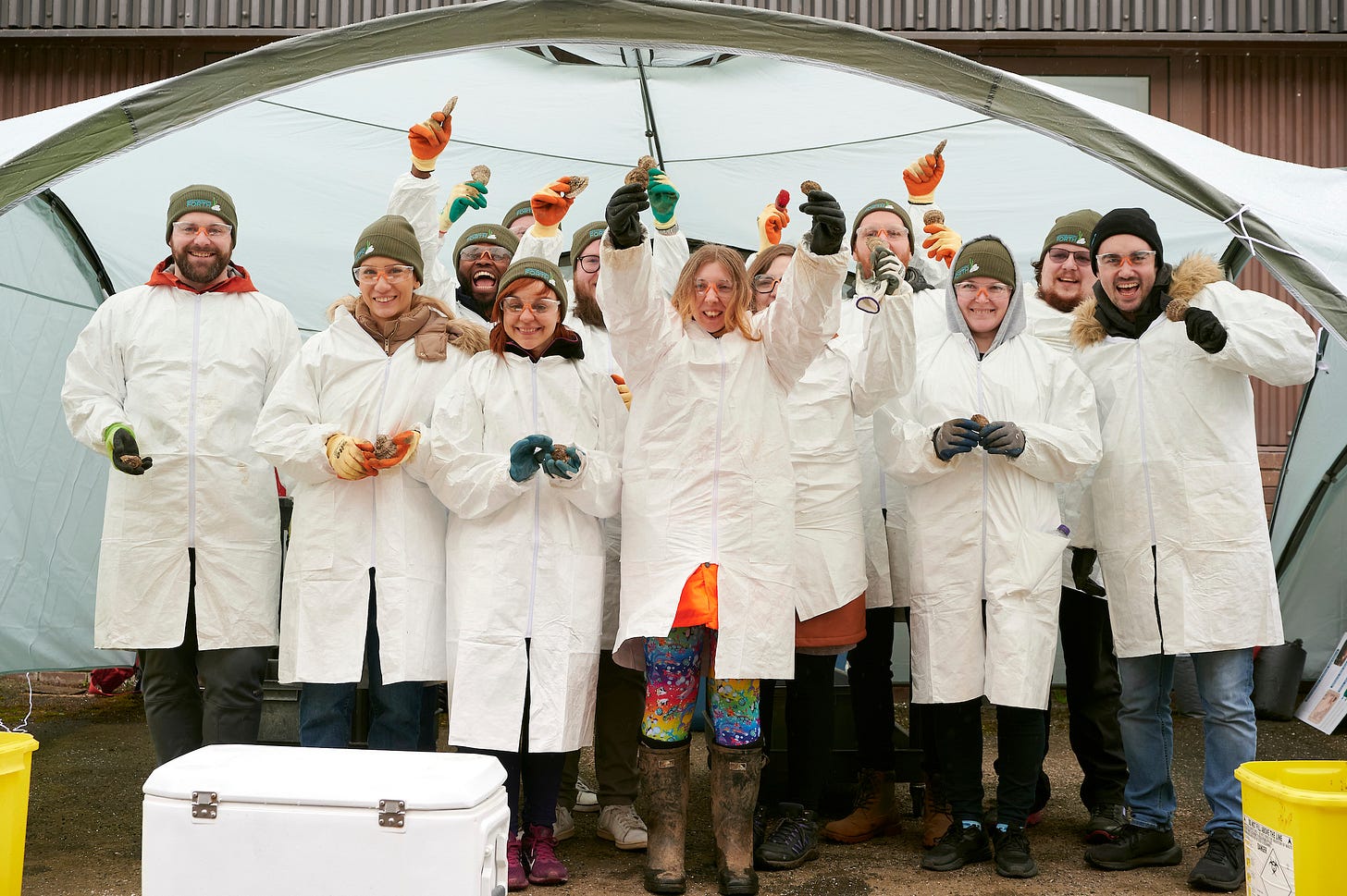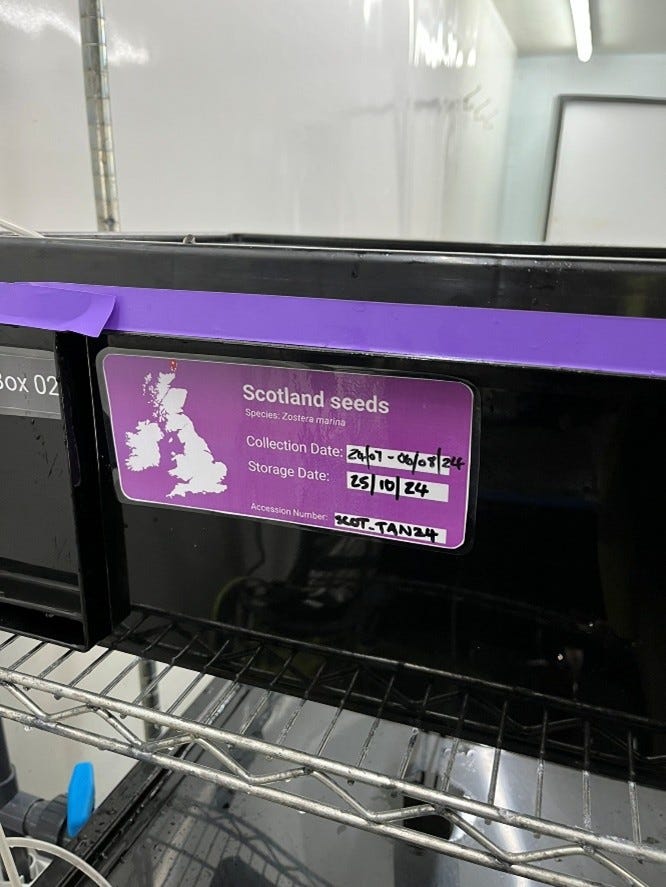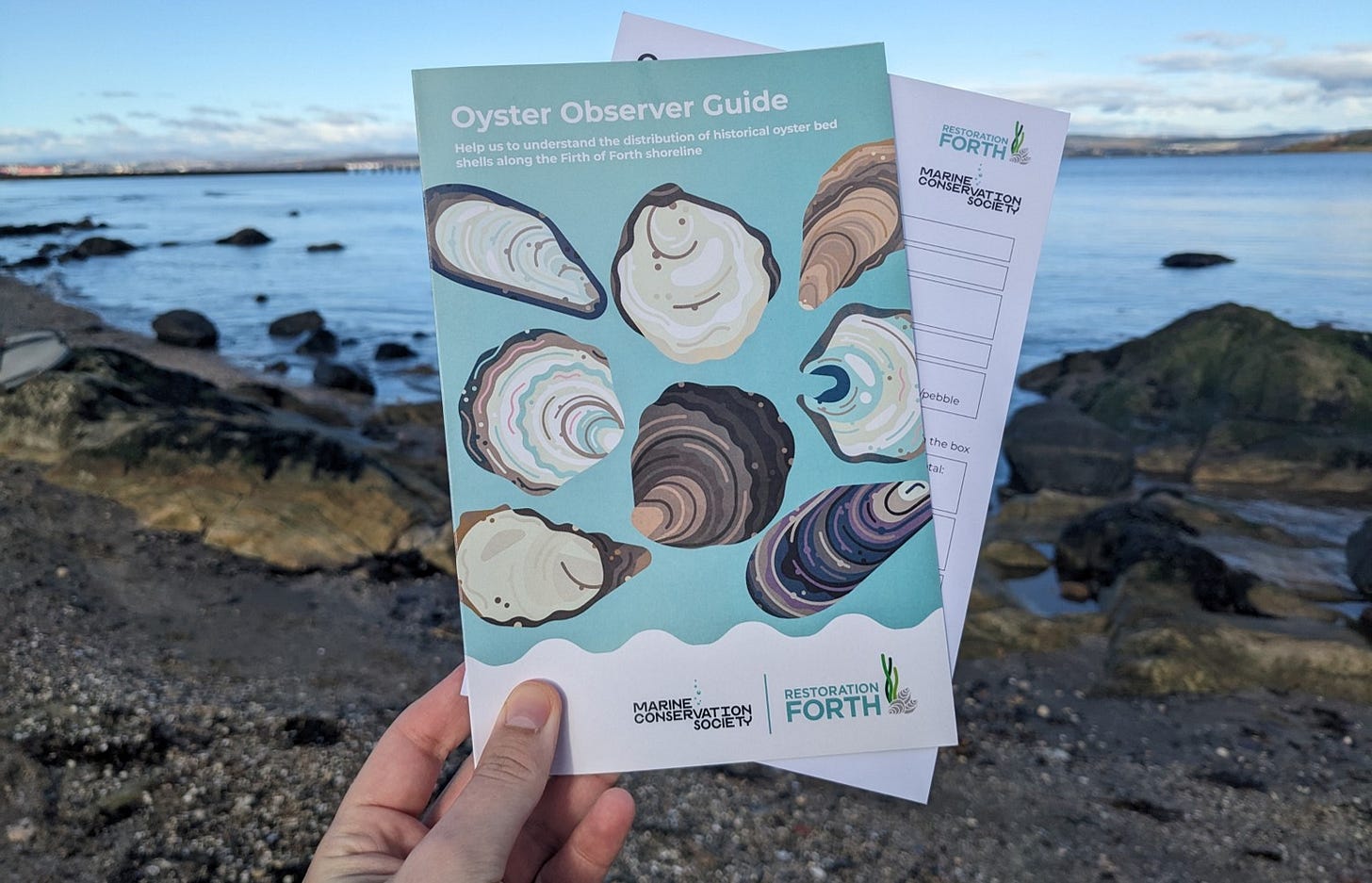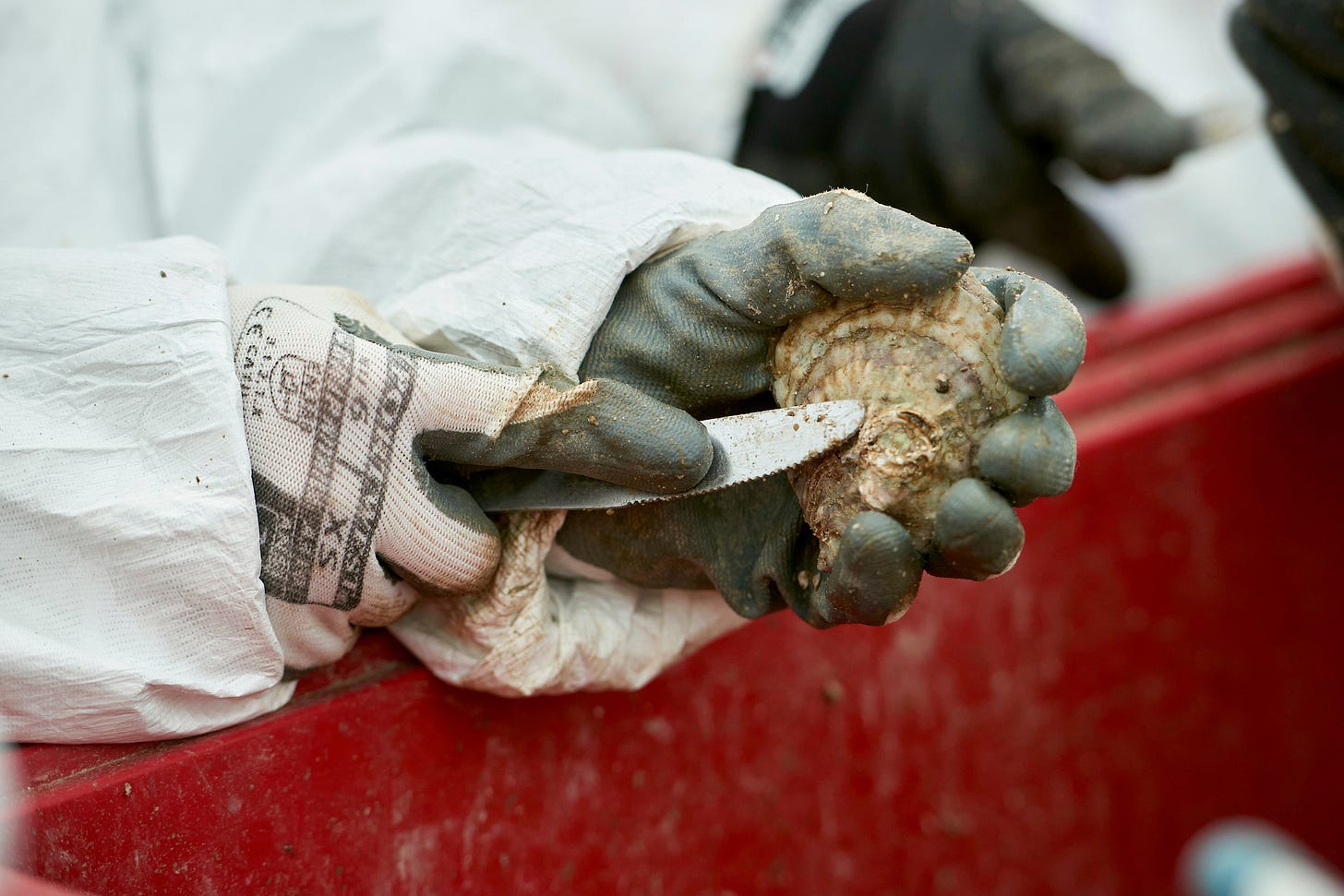Hello from the Restoration Forth Team and a very Happy New Year!
Welcome to our Restoration Forth Newsletter.
Restoration Forth aims to restore seagrass meadows and native oysters into the Firth of Forth, to create a healthier coastline for people and nature. Whether you have been taking part in the project practical sessions, focus groups or just interested in how to get involved, thank you for your time and enthusiasm!
Find out more about the project here . If you missed the Restoration Forth ‘Story So Far’, you can watch it here.
You may have noticed that we are now using a new platform for our newsletter. This is still the official newsletter for Restoration Forth.
Oyster News
Thank you so much to everyone who took part in restoring oysters in 2024.
We are excited to let you know that with our project extension we are planning to deploy another 10,000 oysters this spring. This will bring the total restored by Restoration Forth to 40,000 oysters!
We source the oysters we restore to the Firth of Forth from the west coast of Scotland. As a result, the oysters have to go through a strict biosecurity protocol before they can be released to their new home. This ensures that no invasive species or diseases are transported between the two sites. Part of this biosecurity process involves cleaning each individual oyster by hand with a scrubbing brush and butter knife! So far an incredible 339 volunteers have taken part in the biosecurity process! If you would like to know more about how you can take part this spring, you can find out more information and all sign up links in ‘Upcoming Events’.
Photo credit: Maverick Photo Agency
Seagrass News
With the extension of Restoration Forth, the seagrass team will continue to strengthen the seagrass population here in the Forth by planting more seagrass seeds across our restoration sites. Together with the help of our volunteers, over 70,000 seeds have been processed, which will be used in trials this year. This year the plan is to test whether seed source influences germination and survival rates of planted seeds. Three seed sources will be tested, which include seeds collected from Burntisland, the Moray Firth and Orkney. We hope the results from this year’s trial better inform future planting efforts.
During January and February, the team have been out exploring the intertidal environment at each of the restoration sites to identify new areas where further restoration work can take place.
Upcoming Events
Oyster Citizen Science
North Queensferry Thursday 20th March, 10am-12 noon
Longniddry Bents 2 Tuesday 15th April, 10-11:15am (Citizen Science Month)
Would you like to learn how to identify oyster shells and beach habitats to help us restore the Firth of Forth?
We have developed a citizen science guide to help us collect important information needed for oyster restoration.
During the session we will show you how to carry out two surveys that will help us identify locations to restore oysters. The first will teach you how to identify oyster shells and the second how to identify different beach habitats. We will show you how you can use the guide to carry out a survey and record your survey results. This session will provide you with the skills to carry out these surveys and contribute to our work restoring oysters to the Firth of Forth. The activity is quick and easy to learn, and can be done on any beach around the Firth of Forth!
Event sign-up:
North Queensferry - Thursday 20th March, 10am
Longniddry Bents 2 - Tuesday15th April, 10am - Citizen Science Month
Photo credit: Caitlin Godfrey
Oyster Biosecurity
Where: Heriot-Watt University Campus
When: Thursday 3rd April, 9:45am-4pm (Full day session); Monday 21st, Tuesday 22nd, Wednesday 23rd & Thursday 24th April, 9:45am-12:30pm (Morning sessions)
Restoration Forth are planning to deploy another 10,000 oysters this spring! Join us in cleaning these oysters as part of the biosecurity process so they are ready to be deployed in the Firth of Forth. These oysters will bring our total to 40,000 oysters restored!
Please see below for more information about these events and how to sign up.
Event sign-up:
Thursday 3rd April, 9:45am-4pm
Monday 21st April, 9:45am-12:30pm
Tuesday 22nd April, 9:45am-12:30pm
Wednesday 23rd April, 9:45am-12:30pm
Thursday 24th April, 9:45am-12:30pm
Photo credit: Maverick Photo Agency
Restoration Forth lecture series: Seagrass biodiversity talk
Where: Scottish Seabird Centre, North Berwick
When: Thursday 3rd of April 18:00-19:15pm. Get your ticket here.
Ethan Ross, a PhD student studying seagrass ecology at the University of Aberdeen will be presenting data from his PhD, which has sought to identify and record the different marine organisms which utilise these habitats. Ethan has employed a range of techniques both traditional and new to help uncover the diversity of life found in UK seagrass meadows.
Restoration Forth lecture series: Seagrass in the Firth of Forth
Where: TBC
When: June, exact date to be decided
Our final seagrass talk will focus on seagrass here in the Forth. We will be joined by Professor Alastair Lyndon from Heriot-Watt University, who will be presenting data on the state of seagrass in the Forth. The second half of the presentation will focus on restoration efforts conducted by Restoration Forth.
The venue and timing of this event is still to be determined, please stay tuned for more information.
Oyster Observer Guide Update
Thank you so much to those of you who have completed and submitted an Oyster Observer Guide survey. This information will help inform which sites will be most suitable for oyster restoration work. We so far have surveys from the following locations:
Fife: Kingsbarns, Ravenscraig, Aberdour Silver Sands, Aberdour Black Sands, Aberdour Harbour, Limekilns, Kirkcaldy Beach, Kirkcaldy Esplanade, Kirkcaldy Shiel Burn, North Queensferry South Bay, North Queensferry Port Laing, Burntisland Pettycur.
Edinburgh: Cramond, Dalmeny, Wardie Bay, South Queensferry West Beach, South Queensferry Central Beach, South Queensferry under rail bridge, Seafield Portobello.
East Lothian: Seton Beach, Yellowcraig, Morrisons Haven, Tynemouth at Belhaven Bay, Belhaven Bay, Longniddry (Bents 1, 2 and 3) Fisherrow Sands, Musselburgh beach, Prestonpans, East Beach (Dunbar), Cockenzie, west of Port Seton Harbour, Gullane, Gosford Bay East, Gosford Bay West, Skateraw.
Incholm North Beach and Incholm South Beach.
If you have completed a survey but are still to submit your results, you can do so here. Likewise, if you would like to get involved, the Oyster Observer Guide and instructions on how to take part can be found here.
We are working on a interactive map where you can look at the different locations that surveys have already been submitted, so please watch this space!





